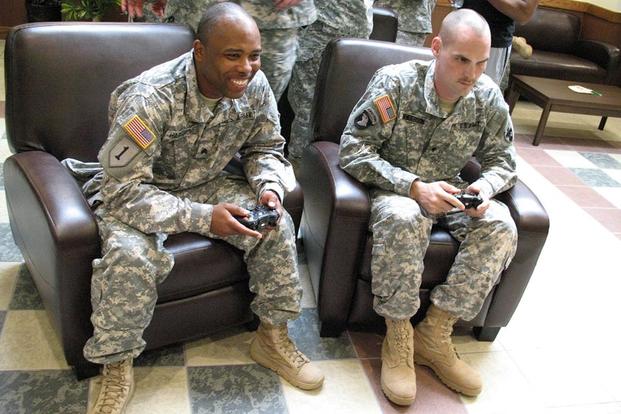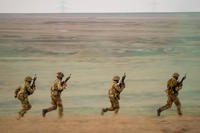The U.S. Army wants to replace its outdated virtual simulators with the kind of realistic, first-person shooter gaming technology designed for Xbox and PS4 game systems.
Synthetic training is one of the top priorities of the Army's senior leadership. It allows soldiers to run through virtual training scenarios at home station before a live training event at one of the service's combat training centers.
"For over 30 years, we have had pretty good simulators for aircraft, for vehicles, tank gunnery. We have not really ever broken the code on the Engagement Skills Trainer ... for dismounted infantry," Gen. Stephen Townsend, commander of Army Training and Doctrine Command, told an audience at the Association of the United States Army's Global Force Symposium on Wednesday.
"Our current trainers are antiquated, they are fixed and they lack the architecture to rapidly upgrade," he said. "We've got to develop the virtual and constructive training environments to allow our squads and teams and soldiers to get multiple reps at low cost and wherever they are."
Related content:
- Army to Test First Next-Gen Ground Combat Vehicles in 2019
- Army Unveils Family of Future Vertical Lift Helicopters
- US Would Fight Without Air Support for Weeks if War With Russia Began
Maj. Gen. Maria R. Gervais, deputy commander of the Army's Combined Arms Center, is leading the cross-functional team to redesign the service's synthetic training environment.
"If you look at our current training environment -- our virtual simulators -- they have served us well. They have met the requirement for what they were built for; however, we are going to try and leverage the unprecedented technological advancements that are being made in the $5.2 billion virtual and gaming industry," she said during a panel discussion on soldier lethality.
"Right now, we are finding promising technology, and we are experimenting with it, conducting technology demonstrations -- we are seeing what works, what doesn't work," Gervais said.
The effort is focused on acquiring technology for small units such as squads to larger units across "our other area ground simulators," she said.
In the near term, the effort will focus on what Gervais called "our Achilles heel:" terrain.
"We have difficulty providing commanders the terrain that they need to prepare their soldiers when they have to fight," she said. "So we have an effort that's called 'one-world terrain' that's going to provide a capability that provides a fully accessible representation of the globe.
"We must ensure that the mega cities or dense urban terrain actually represents the patterns of life," Gervais said.
In Sergeant Major of the Army Daniel Dailey's opinion, for all the good virtual simulators provide soldiers, they also tend to degrade basic soldier skills.
"Soldiers need to be using their weapon systems, their sights in a virtual and constructive environment," he said. "This is a conversation we have all the time. We've got to maintain basic skills, and those virtual environments must do that from the simple things like trigger squeeze, sight picture and aim. They have to be constantly reinforced in those virtual environments."
The Army held an industry day last September and completed the first user assessment last week with seven vendors on site, Gervais said, adding that the assessment included soldiers and leaders from Army Forces Command and the National Guard, as well as from several of the Army's centers of excellence.
"We had master gunners, we had Bradley crew gunners, we had pilots and our technical experts that were all sitting there with those seven vendors telling them what's right and what's not right," she said.
"We are going to bring them back in 60 days, take a look at it, refine the process; then we will actually have an operational test where we put it in the leader's hands with his soldiers ... in the September timeframe," she added.
The effort is also working on developing a new virtual trainer specifically for the squad, Gervais said.
"We lack a squad, semi-immersive training capability," she said. "We are working very closely with the soldier lethality team and the Close Combat Lethality Task Force."
That task force was recently established by Defense Secretary Jim Mattis to develop deadlier, more resilient ground troops.
The Army held an industry day for that effort in February and is planning a user assessment this summer, Gervais said.
"We have seen some very promising technology, and we are going to experiment, do technology demos and give it to soldiers,” she said.
-- Matthew Cox can be reached at matthew.cox@military.com.










